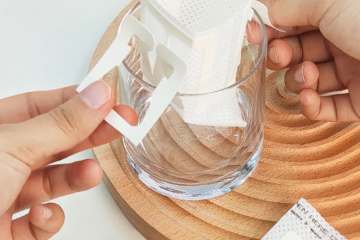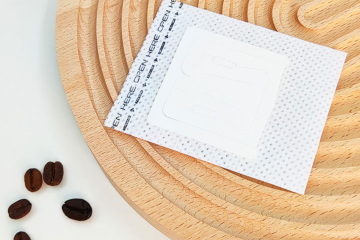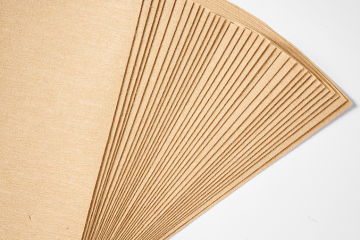Are Coffee Filter Papers All the Same? An In-Depth Analysis Based on Shape and Material
Coffee filter paper, though seemingly a straightforward brewing aid, encompasses a variety of designs and materials. These variations significantly impact coffee taste, reflecting the refined preferences of coffee enthusiasts. Below, we explore the distinctions in coffee filter papers, focusing on shape and material.
I. Shape Variations
Coffee filter papers come in diverse shapes, including cones, trapezoids (or fans), and corrugated (or cake-cup) designs. Each shape is tailored to fit specific filter cups, ensuring uniform coffee extraction during brewing.
Conical Filter Papers: With an angle of approximately 60°, these papers are ideal for single-hole conical filter cups like V60 and KONO. Their design ensures even water distribution over coffee grounds, facilitating consistent extraction. Depending on capacity, conical filter papers are available in sizes No. 01 (suitable for 1-2 servings) and No. 02 (suitable for 2-4 servings).
Trapezoidal (Fan-shaped) Filter Papers: Shaped like a fan, these papers are compatible with filter cups such as Kalita, Melitta, and smart cups. Their fan-shaped design aids in even coffee ground distribution, enhancing extraction efficiency. Trapezoidal filter papers come in models 101 and 102. catering to different brewing needs.
Corrugated (Cake-cup) Filter Papers: Resembling the paper tray of a cupcake, these papers feature a flat bottom and wavy sides. This design maximizes the contact area between coffee grounds and water, improving extraction efficiency. Corrugated filter papers fit filter cups like Kalita Wave and Bonavita’s four-hole cake filter cups, and are available in sizes 155 and 185.
The shape of filter paper not only influences extraction efficiency but also alters coffee taste. Different shapes create varied water flow paths and extraction durations, impacting coffee’s flavor profile.
II. Material Differences
Coffee filter papers are made from various materials, primarily paper and metal. These materials vary in filtering effectiveness, reusability, and environmental impact.
Paper Filter Papers:
Ordinary Paper: Simple and easy to use, effectively filtering coffee grounds and oil for a refreshing taste. However, it may have a slight pulp flavor, which can be minimized by preheating or wetting.
Cotton Paper: Crafted from renewable cotton fiber, it’s thick and durable. Cotton paper retains more coffee oil and flavor, resulting in a richer, smoother taste. Additionally, it’s environmentally friendly.
Bamboo Paper: Made from bamboo fiber, it’s sturdy and eco-friendly. Bamboo paper provides effective filtration without compromising coffee flavor.
Original vs. White Paper: Original paper, light brown and unbleached, may have a natural paper taste. White paper, bleached with bioactive enzymes, is odorless and non-toxic. Stringent selection, processing, and quality control ensure white paper doesn’t alter coffee’s original flavor.
Metal Filters:
Like stainless steel filters, they offer reusability. They filter out more coffee oil and impurities, enriching coffee’s taste. However, metal filters can retain coffee grounds and odors, requiring thorough cleaning and maintenance. Moreover, metal filters may alter coffee’s flavor during brewing due to potential chemical reactions.
III. Conclusion
Coffee filter papers vary in shape and material, influencing extraction efficiency and taste. Choosing the right filter paper involves considering personal taste preferences, brewing methods, and environmental concerns. By understanding the unique attributes of different shapes and materials, you can enhance your coffee brewing skills and savor delicious coffee.




0 Comments